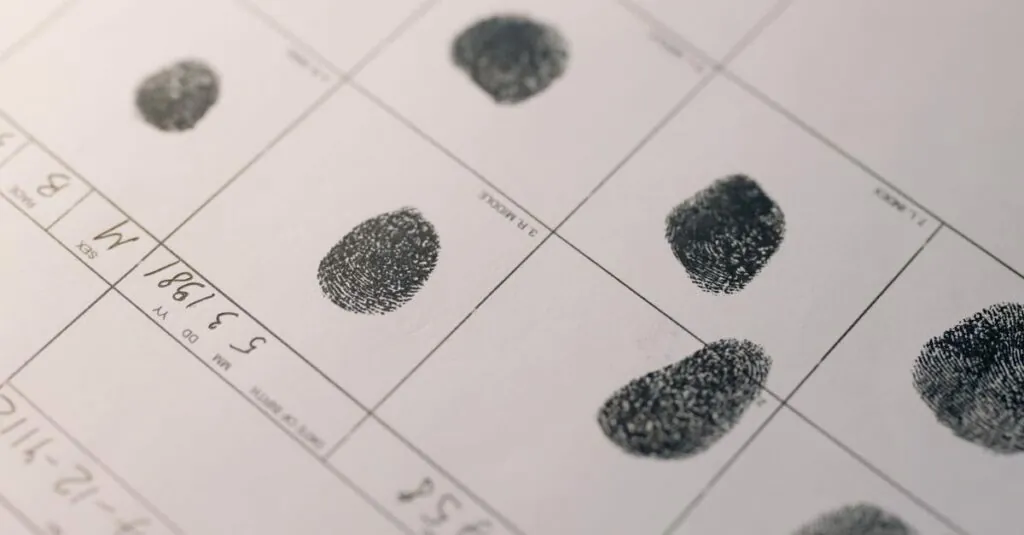Table of Contents
ToggleIn a world where passwords can be as forgettable as last year’s fashion trends, biometric authentication on iPhones is a game changer. Imagine unlocking your phone with just a glance or a simple touch—it’s like having a personal bodyguard that only lets you in. No more typing in those long, complicated passwords that always seem to escape your memory right when you need them.
Overview of Biometric Authentication
Biometric authentication offers a secure method for unlocking iPhones. Users can rely on unique physical traits, such as fingerprints or facial features. This method replaces traditional passwords, enhancing convenience and security. iPhones utilize Touch ID and Face ID, two systems that provide effortless access.
Touch ID scans a user’s fingerprint, allowing quick unlocks and app purchases. With advanced technology, it ensures that only registered fingerprints gain access. Face ID employs facial recognition, detecting features for unlocking devices. Both options prioritize user privacy and data security.
In terms of security, biometric authentication is hard to replicate. Unlike passwords, which can be forgotten or stolen, physical traits remain constant. Apple emphasizes encryption, ensuring that biometric data stays secure and is stored safely on the device.
Adoption of biometric systems has grown significantly. Many users prefer these methods due to their efficiency and ease of use. Statistics indicate a rise in device security with biometric authentication implemented. Research shows that over 80% of users feel safer using these technologies.
Overall, biometric authentication streamlines access to iPhones while enhancing security. Users benefit from peace of mind knowing that access is limited to their unique traits. This system not only simplifies usage but also promotes a secure digital environment.
Benefits of Using Biometric Authentication
Biometric authentication offers significant advantages for iPhone users, making access both secure and convenient.
Enhanced Security
Enhanced security defines biometric authentication as it relies on unique physical traits. Fingerprints or facial features provide a level of protection that traditional passwords cannot. This technology dramatically reduces the risk of unauthorized access since replicating someone’s biometrics is extremely difficult. Apple encrypts biometric data and stores it securely on the device, ensuring user privacy. Statistics indicate that over 80% of users feel safer when using these technologies. Relying on innate physical characteristics ensures that access remains exclusive to the rightful owner.
User Convenience
User convenience is another key benefit of biometric authentication. Unlocking an iPhone becomes effortless with features like Touch ID and Face ID. Users no longer need to remember complex passwords or enter lengthy PINs. Quick access saves time and encourages regular use of device features. App purchases and secure logins occur faster than ever, enhancing the overall user experience. With just a touch or a glance, accessing the iPhone becomes a seamless process. This simplicity encourages optimal usage, allowing users to engage with their devices without hesitation.
Steps to Enable Biometric Authentication on iPhone
Enabling biometric authentication on an iPhone enhances security and simplifies access. The following steps outline the processes for both Face ID and Touch ID.
Setting Up Face ID
Face ID allows users to unlock their devices quickly using facial recognition. To set it up, navigate to Settings, then tap on Face ID & Passcode. Enter the device passcode to proceed. Users can then choose to configure Face ID for unlock, iTunes & App Store purchases, and Apple Pay. Align the face within the frame displayed on the screen, moving the head slowly to complete the scan. After one successful scan, follow on-screen instructions to complete the process. Users may add an alternate appearance if desired, enhancing recognition flexibility.
Setting Up Touch ID
Touch ID enables quick access to devices using registered fingerprints. Start by going to Settings and selecting Touch ID & Passcode. After entering the device passcode, select Add a Fingerprint. Follow the prompts to place the finger on the Home button repeatedly until the fingerprint is fully registered. Users can set Touch ID for unlocking the device, App Store purchases, and Apple Pay. Registering multiple fingerprints allows access through various fingers, improving convenience.
Troubleshooting Common Issues
Biometric authentication can sometimes encounter issues. Below are solutions for common problems with Face ID and Touch ID.
Face ID Not Working
Face ID may fail due to various reasons. First, ensure the TrueDepth camera isn’t blocked by cases or screen protectors. Next, check if the user’s face is properly positioned within the frame. A well-lit environment enhances facial recognition accuracy. If Face ID still doesn’t unlock, navigate to Settings, select Face ID & Passcode, and reset the feature. To redefine facial recognition, users must enter their passcode for verification. Lastly, ensure that the device is up to date, as software updates can resolve recognition bugs.
Touch ID Not Recognizing Fingerprint
Touch ID issues may arise from improper fingerprint registration. Users should ensure their fingers are clean and dry. For the best results, register fingerprints from different angles and positions. If Touch ID stops recognizing the fingerprint, the user can go to Settings, select Touch ID & Passcode, and re-register their fingerprints. It’s important to delete any old or unrecognizable prints first. Additionally, keeping the device updated can rectify glitches that affect functionality.
Enabling biometric authentication on an iPhone transforms the way users interact with their devices. It not only enhances security but also provides unmatched convenience. With Touch ID and Face ID, users can unlock their phones and make purchases effortlessly while keeping their data secure.
By following the simple steps outlined, anyone can easily set up these features and enjoy a seamless experience. Troubleshooting tips ensure that users can maintain optimal functionality, allowing them to fully benefit from this advanced technology. Embracing biometric authentication means embracing a safer and more convenient digital lifestyle.







